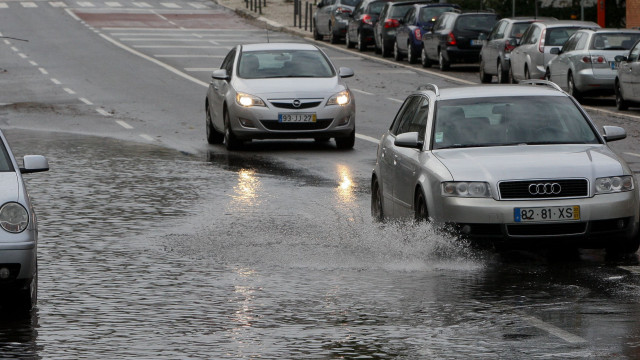The effects of depression Cláudia, which has been sweeping the country from north to south, will continue to be felt at the beginning of the week from November 17 to 23. However, the rain will eventually give way to cold, according to the forecasts from the Portuguese Institute of the Sea and the Atmosphere (IPMA).
From Tuesday, November 18, mainland Portugal is expected to be “influenced by a northern flow and cold air mass, which will cause a significant drop in air temperature.”
“This change in the weather regime will bring low air temperature values, lower than normal for the time of year,” detailed the IPMA in a statement issued on Friday.
In this context, the agency pointed out that “there will be a decrease in cloudiness and precipitation, with occasional light showers likely at the end of the week, which will be snow in the highest places of Serra da Estrela,” and that “north quadrant winds will sometimes blow strong on the coast and highlands.”
From Thursday, November 20, the minimum temperature will be below “5°C in the northeast region of the territory, with values close to 0°C in the higher inland cities.” It may also reach “values close to -5°C at the top of Serra da Estrela,” with the expectation of “frost formation in the north and central inland regions.”
Regarding the maximum temperature, the IPMA forecasts that “it will have values around 14°C to 18°C in much of the territory, except in the more interior parts, where it will be between 9°C and 12°C.”
The rainy scenario will be similar in the Madeira archipelago, where maximum temperatures could range between 25°C and 8°C, while minimums will be between 19°C and 4°C.
The same will occur in the Azores archipelago, where maximum temperatures will be between 17°C and 21°C. Minimum temperatures, on the other hand, are expected to vary between 12°C and 19°C.
It should be noted that Faro, Setúbal, and Beja remain under orange alert this Saturday, at least until 3:00 p.m., due to persistent rain, sometimes heavy and accompanied by thunderstorms. The district of Braga is in the same situation, although the IPMA predicts the bad weather may ease before early afternoon.
The districts of Viana do Castelo, Porto, Viseu, Aveiro, Coimbra, Portalegre, Santarém, and Lisbon are under yellow alert, as well as the southern coast and mountainous regions of Madeira Island, due to forecasts of heavy rain and thunderstorms. The district of Évora is also under yellow alert because of the strong wind, with gusts that can reach 80 km per hour.

The IPMA today placed the district of Braga under orange alert due to heavy rain, thus increasing to four the regions of mainland Portugal with the second most severe weather alert.
Lusa | 08:47 – 15/11/2025




